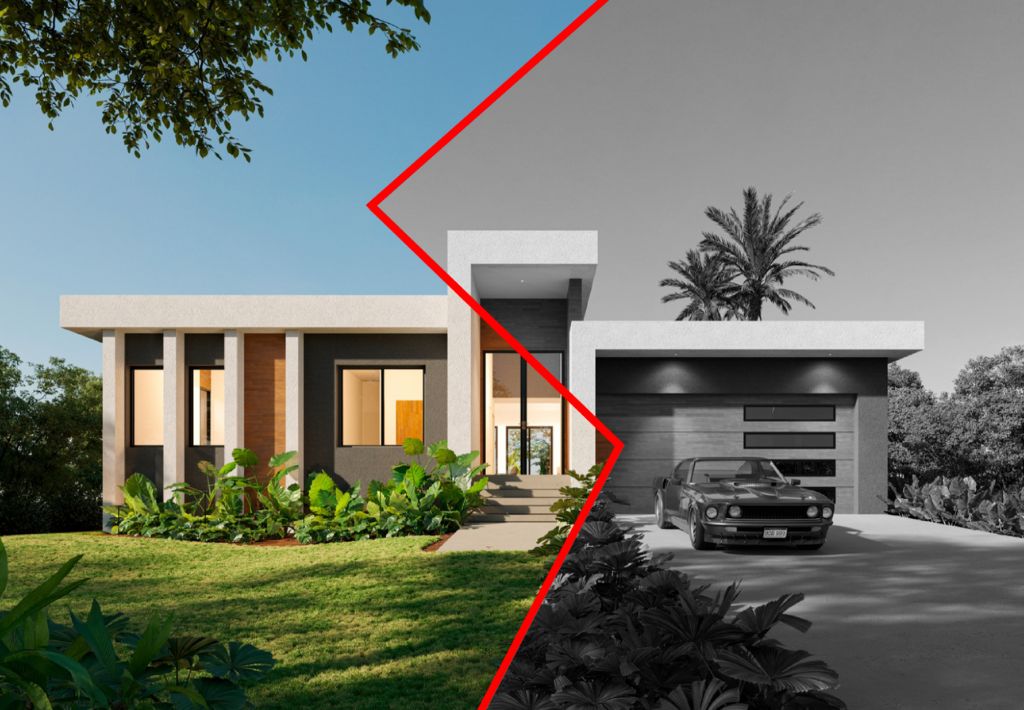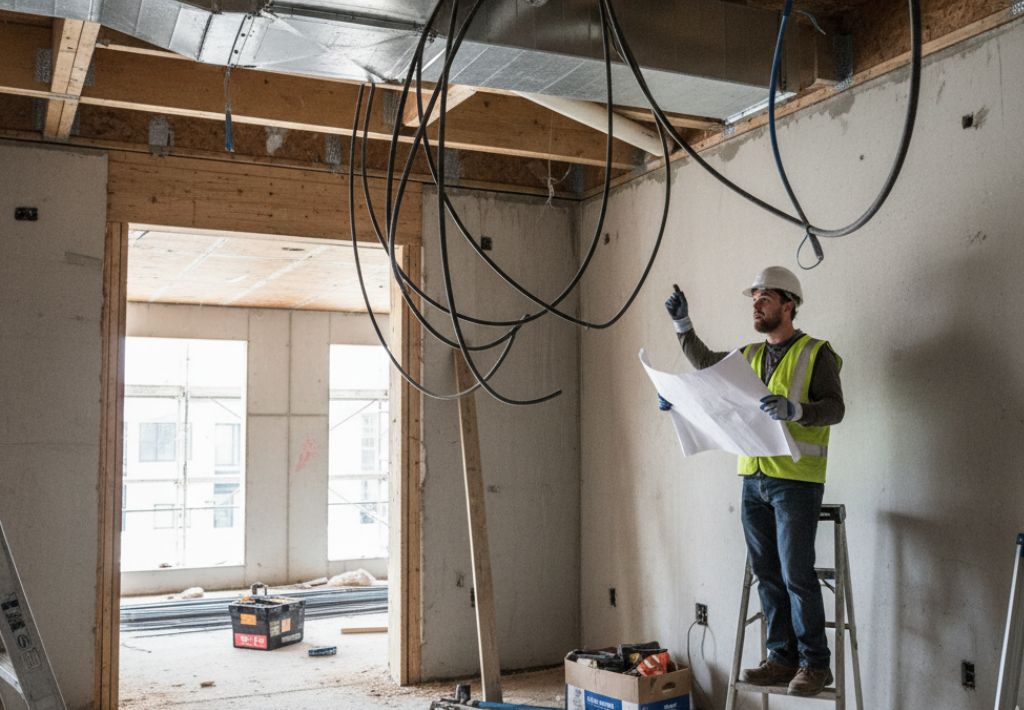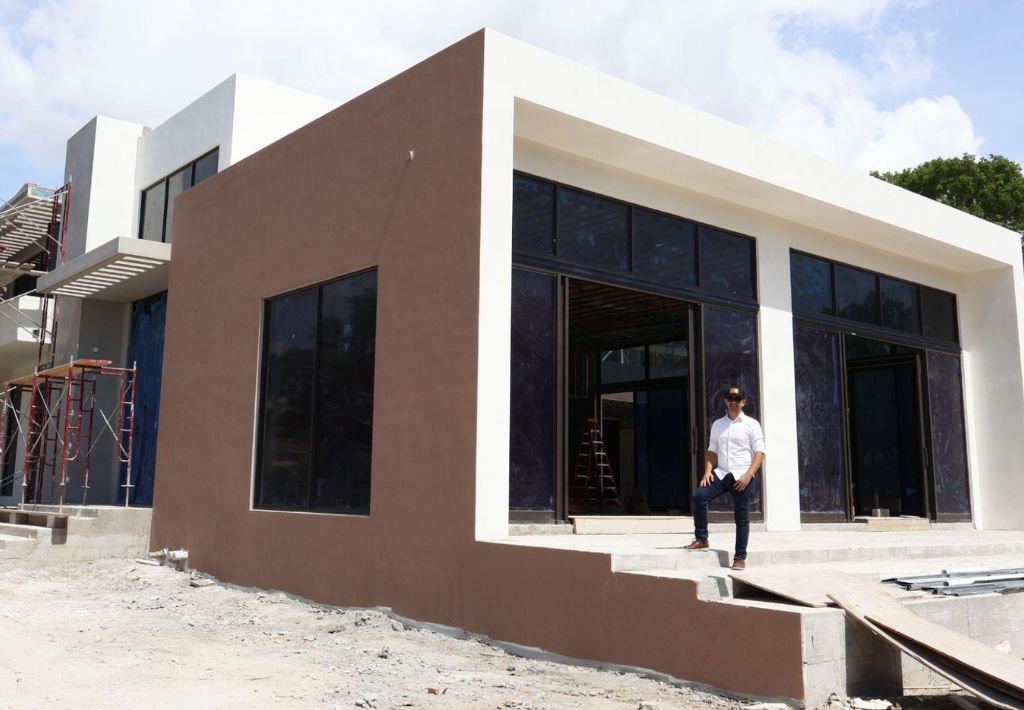
Imagine this: A nice waterfront lot and an ambitious luxury home project. The owner chose a cheap architect to control costs, which seemed like smart budgeting at the time.
One year later, construction hasn't started. The plans? Unbuildable.
Call up the project architect… crickets.
This happens all the time.
Now, the owner had to hire an expert architect to rework everything from scratch. The final bill: original architectural fee + expert architect fee + 12 months of carrying costs + construction cost inflation + angry spouses + sad kids x snickers and judgment from your friends = Yikes.
The "savings" from hiring cheap? Non-existent.
This common story is what happens when homeowners and developers treat architecture as a commodity instead of recognizing it as the strategic investment that protects ROI, accelerates timelines, and creates one-of-a-kind living spaces.
In this article, I have changed the names and faces to protect the innocent - but they are real slices of life that come from hiring a cheap architect.
Digital Intervention. Meadows Contemporary Project. Design: MIK Architecture.
When you see dramatically different architectural fees, you're not comparing the same service at different prices. You're comparing fundamentally different approaches to your project.
In other words, it’s not a transactional issue whereby you’re looking for “Product XYZ” on Amazon and the lowest price wins.
You are investing in a service. And to compromise price, compromise scope.
Coordination disappears first.
No MEP coordination means mechanical, electrical, and plumbing systems aren't reviewed against architectural plans until a week before construction starts. That's when you discover the ductwork doesn't fit in the ceiling plenum or the structural beams conflict with the plumbing routes. These aren't small adjustments. They’re likely not up to code to begin with and they're expensive change orders that could have been caught in the design phase with proper coordination. Understanding building plans is essential and your team needs to be fully aligned on how to do that!

Permit-ready documentation becomes "good enough" documentation.
Incomplete submissions trigger multiple review cycles with your municipality. Each round adds weeks or months to your timeline. Vague specifications create questions from plan reviewers. Missing details mean you're revising and resubmitting instead of breaking ground.
Local expertise gets replaced with generic solutions.
Standard details that work in other markets don't necessarily address your specific municipality's code requirements or review priorities. When your architect doesn't have established relationships with local building departments or understanding of what triggers additional scrutiny, you're learning those lessons the expensive way - with delays and revisions.
Proactive communication becomes reactive responses.
Instead of weekly updates that keep you informed about progress, challenges, and next steps, you're chasing your architect for information that other teams might need to do their job. Problems get discovered late instead of being anticipated and solved early. You're managing your architect instead of your architect managing your project timeline.
The math never works in your favor.
That "affordable" architect might save you $25 to $100k upfront. But when that choice costs you 12 to 24 months in permit delays, 25% in construction change orders, and carrying costs on your entire investment, you haven't saved money. You've just shifted costs from predictable architectural fees to unpredictable, uncontrollable construction and timeline problems.
Your cheap architect's plans take 18 Months to permit instead of 12 Months. Why? Incomplete submissions require multiple resubmissions. Missing coordination creates review delays. Generic details don't address local municipality requirements.

Every month of delay compounds your costs. You're carrying your construction loan. You're paying property taxes and insurance. Construction costs are inflating. Your target market window is closing. If you planned to complete during peak selling season, you've now missed it.
On a $2M land loan at 10% interest rate, every month costs you $16,500 in interest alone. Now imagine six months of delay (best case) with up to 12 months of delay (worst case); then, add construction cost inflation at 3% annually, and you've already exceeded any architectural fee savings - before you've broken ground!
Those cheap plans you ordered online create problems because they might not apply to your site. Without a BIM model, conflicts between systems aren't discovered until they're being installed. Without interior elevations and callouts, finish decisions happen in the field with contractor markup and limited alternatives. Without detailed specifications, you're making expensive decisions under time pressure.
The worst-case scenario (and it's more common than developers expect) is discovering during construction that critical systems simply don't work as drawn. Structural and architectural drawings don't align. Code compliance issues that weren't caught in permit review become problems during inspection. Specifications conflict with actual site conditions.
Your options: halt construction and redesign (paying for time and new plans), build it wrong and face inspection failures, or bring in a new architect to fix everything (paying for architecture twice). None of these options are cheaper than investing appropriately in architecture from the start.
Every developer or high-end homeowner faces the same choice: invest appropriately in architecture upfront, or pay exponentially more to fix problems during construction.
You're not hiring an architect to draw plans. You're hiring them to protect your construction budget, accelerate your permit timeline, coordinate complex systems before they're installed, and create market-ready designs that drive ROI - and, yes - you’re also hiring them to make something uniquely yours!

The architectural fee isn't an expense to minimize. It's the investment that protects every other dollar you spend on your project.The question isn't whether you can afford quality architecture. It's whether you can afford to build without it.
If you’ve got a site and are ready to build, the best advice we have is to speak to an architect early. Send us an email, because chatting with us at first at MIK Architecture costs you nothing, and can save you everything.
